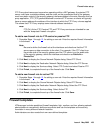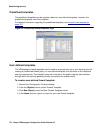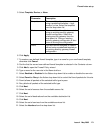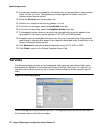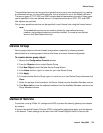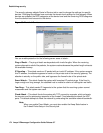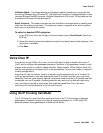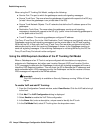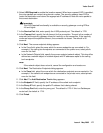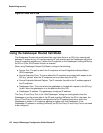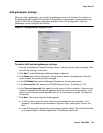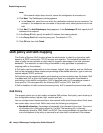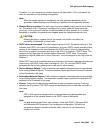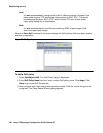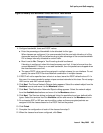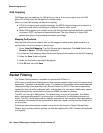
Voice Over IP
Issue 4 May 2005 177
6. Select LRQ Required to enable the location request. When learn request (LRQ) is enabled,
the voice packets are routed using domain names. The security gateway uses LRQ to
locate the destination and returns the appropriate IP address to route the voice packet to
the correct destination.
!
Important:
Important: The LRQ Required functionality is available on security gateways running VPNos
4.6 and higher.
7. In the Service Port field, enter specify the H.323 protocol port. The default is 1720.
8. In the Timeout field, specify the idle timeout for the connection. Timeout is the number of
seconds that the security gateway allows for inactivity on the connection. If the inactivity
continues beyond the specified timeout, the connection is closed. The default is 90
seconds.
9. Click Next. The source endpoints dialog appears.
● In the Zone field, select the zone which the source endpoints are connected to. For
example, if the calling trunk endpoints are connected to the public zone, select public
zone for this field.
● In the Network Objects field, specify the source endpoint network object. This should be
defined as a network object or network objects with IP addresses equal to the calling
trunk endpoints.
Note:
Note: If the network object does not exist, cancel the configuration and create one.
10. Click Next. The Destination Endpoints dialog appears.
● In the Zone field, select the zone which the destination endpoints are connected to. For
example, if the called trunk endpoints are connected to the private zone, select private
zone for this field.
11. Click Add. The Add Destination Trunk dialog appears.
12. In the Endpoint IP field, specify the IP address of the called trunk endpoint.
13. In the Proxy IP field, specify the public IP address that is being shared.
14. In the Proxy Port field, enter the proxy port. The default is 1720. If this is a Gatekeeper
routed call, the default is 1719.
15. Click Finish.



